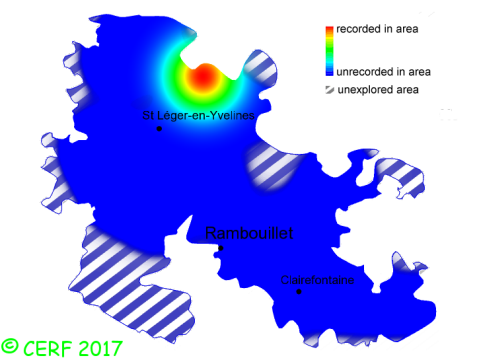|
Amanita verna (Bull.:Fr.) Lamarck
|
common name(s) : Spring Amanita
New classification: Basidiomycota/Agaricomycotina/Agaricomycetes/Agaricomycetidae/Agaricales/Amanitaceae
Former classification: Basidiomycota/Homobasidiomycetes/Agaricomycetideae/Agaricales/Amanitaceae
[sub-genus:Lepidella section:Phalloideae ]
synonyms: Amanita phalloides-verna
(unconfirmed synonyms: Agaricus bulbosus-vernus)
edibility : deadly poisonous
|
|
|
The cap is white to cream; its margin is smooth.
The cap surface is smooth.
The stem is white without zebra-like markings, mealy and smooth, bulbous, with a white sheathing volva, and a membranous striate ring.
The flesh is unchanging; its taste is mild then slightly acidic; the odour is faint, then rank for old specimens;
its texture is fibrous.
The gills are white, free, crowded .
The spore print is white. This species is mycorrhizal.
It grows on the ground, in parks, deciduous (sometimes coniferous) woods, in warm places, on a rather calcareous soil, with oak.
The fruiting period takes place from April to November.
| Dimensions: | width of cap approximately 8 cm (between 2 and 15 cm) |
| | height of stem approximately 9 cm (between 4 and 15 cm) |
| | thickness of stem (at largest section) approximately 13 mm (between 6 and 20 mm) |
Chemical tests : flesh not becoming yellow when in contact with potash (KOH).
Distinctive features : entirely white; tight sheathing sac-shaped volva at stem base; young specimens with spherical shape; stem with membranous ring; flesh does not turn golden yellow when in contact with caustic soda; often appears in spring but also in autumn
Amanita verna is rare and confined in the forest of Rambouillet, and is quite rare, more generally speaking
.
|  | | Above : distribution map of Amanita verna in the forest of Rambouillet |
|
page updated on 14/01/18